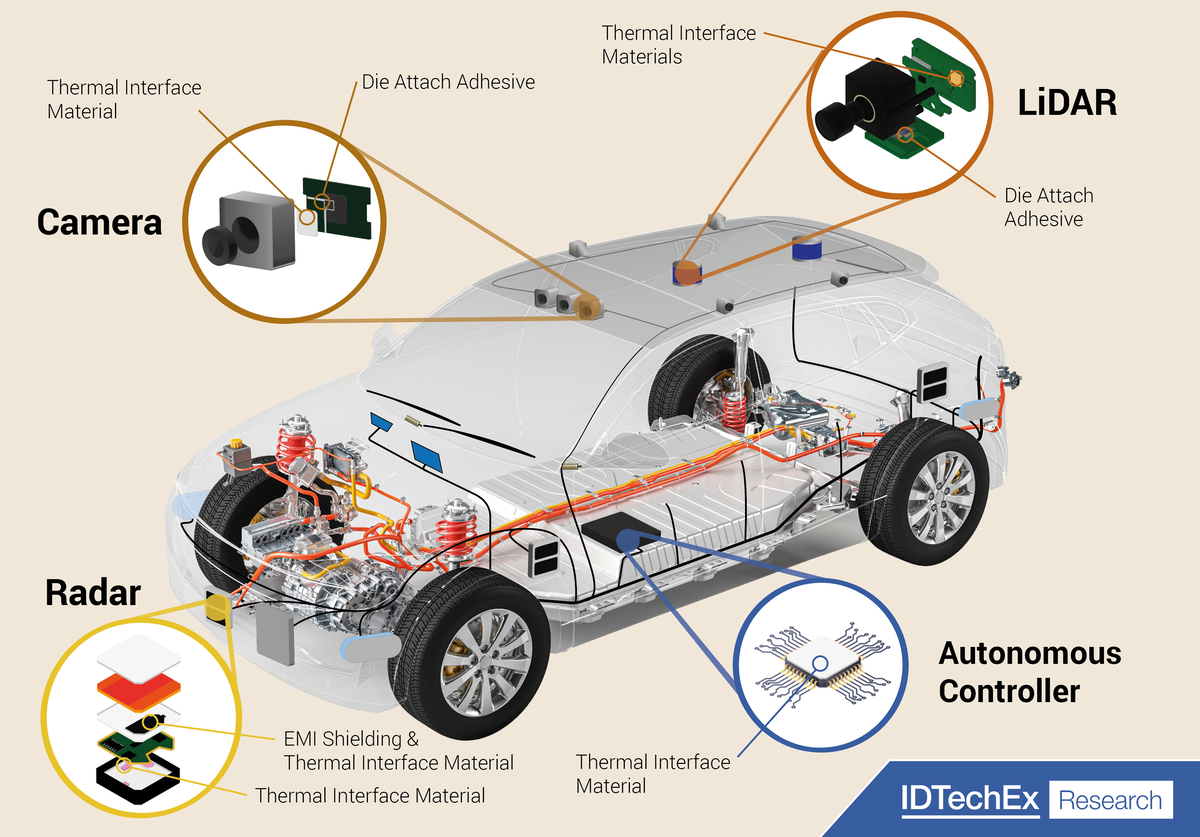The automotive market is trending towards greater levels of autonomy with advanced driver-assistance systems (ADAS) becoming increasingly adopted to improve the safety of drivers and pedestrians or even just to make driving a more convenient experience. ADAS encompasses a huge variety of functions from automatic emergency braking all the way to fully autonomous driving. Something that all ADAS features have in common is the need for high-quality sensors and the associated processing of their data.

ADAS sensors are also often used in non-ideal environments for electronics requiring resistance to shock and vibration and, in certain cases, having to withstand heat from a combustion engine. For many sensor locations, active cooling will not be viable and in hot climates the temperatures of sensors could increase significantly whilst the vehicle is stationary.
Like any modern electronics component, ADAS sensors and computers require thermal interface materials (TIMs) to help spread heat from the heat generating element to a heat sink or unit enclosure. Cameras, radars, LiDARs, and ECUs all have their own TIM requirements and as their designs evolve, so too do their TIM needs. Whilst the average ECU now may use a fairly typical TIM with 3-4 W/m
k thermal conductivity, the increased processing power required for autonomous functions could see this rise significantly.


